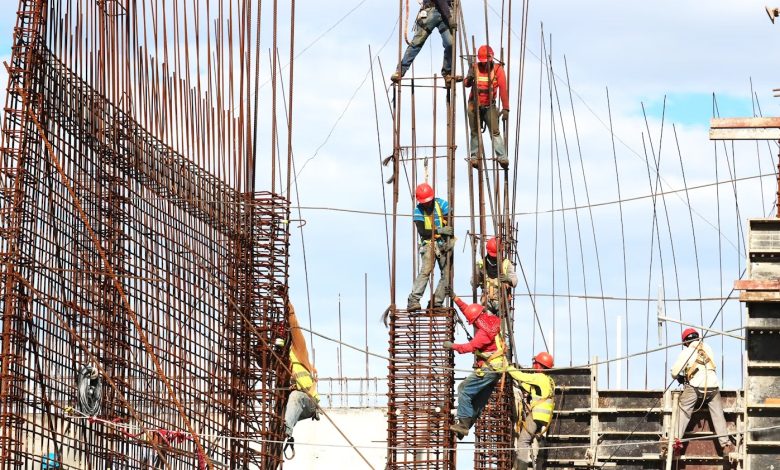Securing Construction Sites and Promoting Safety Through Workplace Regulations

The construction sector, renowned for its impressive infrastructure projects and vibrant work environments, significantly bolsters the U.S. economy. As of the 1st quarter of 2023, data from The Associated General Contractors of America revealed over 919,000 construction establishments across the country. These establishments are actively operating and contributing to various projects nationwide.
This expansive industry employs approximately 8.0 million workers. Annually, it contributes to the creation of structures valued at nearly $2.1 trillion, showcasing its substantial impact on economic growth and development.
However, beneath the impressive facades lie inherent dangers that threaten the lives and well-being of workers.
In this article, we explore the critical importance of robust safety protocols in construction, examining the broader implications for workers, employers, and regulatory bodies. Through an examination of pertinent issues and real-life examples, we uncover the pressing need for stringent workplace regulations to safeguard lives and prevent tragedies.
The Human Toll of Unsafe Practices
Construction sites are dynamic and bustling hubs of activity where workers navigate a myriad of hazards daily. From precarious heights to heavy machinery and hazardous materials, the risks are manifold. Sadly, these hazards can have devastating consequences, resulting in injuries, disabilities, and, in the worst cases, fatalities.
Construction Dive reports that in 2022, the construction industry recorded the highest number of workplace fatalities among all sectors. Specifically, there were 1,069 deaths reported within the industry. This equates to a rate of 9.6 fatalities per 100,000 full-time workers, marking an increase from the previous year.
While these accidents are often viewed as unfortunate incidents, they are, in reality, stark reminders of systemic failures in ensuring workplace safety. Each injury or loss of life not only shatters families but also exposes the inadequacies of existing safety measures.
The Regulatory Framework
At the heart of the issue lies the regulatory framework governing workplace safety. Organizations like the Occupational Safety and Health Administration (OSHA) play a crucial role in setting standards and guidelines to protect workers.
However, the efficacy of these regulations is contingent upon robust enforcement and compliance mechanisms. Disparities in enforcement, coupled with loopholes in regulations, undermine the effectiveness of safety measures, leaving workers vulnerable to risks posed by negligent practices.
Challenges in Enforcement
Enforcing safety regulations poses significant challenges for regulatory bodies and employers alike, especially in an industry characterized by stringent deadlines and cost pressures. Prioritizing productivity over safety can lead to the neglect of essential protocols, increasing the likelihood of accidents and injuries.
Moreover, the transient nature of construction work, often involving subcontracting and outsourcing practices, complicates accountability and oversight. This complexity makes it challenging to maintain consistent adherence to safety standards across different project phases and stakeholders.
For instance, consider the tragic incident at a residential development in Edwardsville, Illinois, as reported by FOX 2 news. In August 2022, two construction workers were found deceased inside a manhole due to a buildup of toxic gases. Fire Chief James Whiteford emphasized the common occurrence of gas buildup in such environments, underscoring the necessity for preventive measures.
This highlights a crucial oversight in workplace safety protocols. As adequate protective equipment and sufficient ventilation should have been in place to shield workers from such potential hazards.
If you suspect your loved one has also been harmed due to such safety lapses, seeking legal assistance becomes imperative. Hiring an Edwardsville personal injury lawyer can provide essential support in navigating the legal complexities surrounding workplace accidents.
These professionals can advocate for the rights of victims and their families, pursuing compensation for damages incurred. According to TorHoerman Law, they also hold responsible parties, including authorities and employers, accountable for their negligence. In addition to seeking compensation, legal action can also serve as a deterrent, prompting authorities and employers to prioritize safety and prevent future tragedies.
Addressing Systemic Issues
To address the systemic issues plaguing construction site safety, a multifaceted approach is needed. Firstly, regulatory bodies must bolster enforcement efforts, holding employers accountable for lapses in safety practices. This entails conducting regular inspections, imposing stringent penalties for violations, and providing resources for compliance assistance.
Additionally, there is a pressing need for increased collaboration between industry stakeholders. This includes employers, workers, unions, and government agencies. The aim is to foster a culture of safety and shared responsibility.
FAQs
Why is workplace safety in the construction industry important?
Workplace safety in the construction industry is crucial due to the numerous hazards present on construction sites. These hazards include falls, machinery accidents, and exposure to hazardous materials. Ensuring safety measures are in place protects workers from injuries and fatalities.
What are some common challenges in enforcing workplace safety regulations in construction?
Common challenges include the prioritization of productivity over safety, especially in industries with tight deadlines and cost pressures. Additionally, the transient nature of construction work, subcontracting practices, and varying compliance levels among employers complicate enforcement efforts.
Why is legal assistance important for victims of workplace accidents?
Legal assistance can help victims and their families navigate the complexities of workplace accidents and pursue compensation for damages incurred. It also enables them to hold responsible parties, including authorities and employers, accountable for negligence. It ensures that victims receive the support and justice they deserve.
In conclusion, construction site safety is not merely a regulatory requirement but a moral imperative. The lives and well-being of workers hang in the balance, demanding a concerted effort to prioritize safety above all else.
By strengthening workplace regulations and enhancing enforcement mechanisms, we can create safer environments for construction workers. Fostering a culture of safety will further mitigate the risks inherent in this vital industry.
The time for action is now, lest we allow more lives to be lost to preventable accidents.